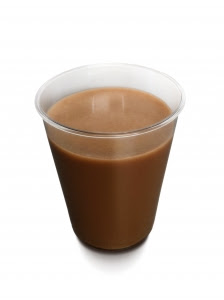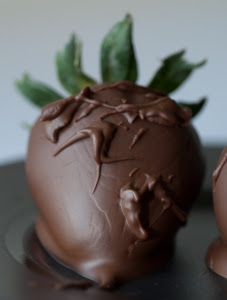A Brief History of Chocolate
 The origin of the word chocolate can be traced back to the Aztec word xocoatl. Theobroma cacao, Food of the gods, is how chocolate is known in Latin. I think you all would agree with that definition.
The origin of the word chocolate can be traced back to the Aztec word xocoatl. Theobroma cacao, Food of the gods, is how chocolate is known in Latin. I think you all would agree with that definition.
For centuries, chocolate has been known as a sublime pleasure for the senses. In our times, chocolate is a widely acknowledged sweet that we eat, but for most of its life, it was a bitter and/or spicy beverage.
 The Mayans and their ancestors in Mesoamerica were the first people clearly known to have discovered the secret of cacao during 250–900 CE. The trees grew in the rainforests on their lands. The Mayans harvested, fermented, roasted, and ground the cacao seeds into a paste, then mixed it with water, chili peppers, cornmeal, and other ingredients to make a frothy, spicy chocolate drink, according to the Field Museum.
The Mayans and their ancestors in Mesoamerica were the first people clearly known to have discovered the secret of cacao during 250–900 CE. The trees grew in the rainforests on their lands. The Mayans harvested, fermented, roasted, and ground the cacao seeds into a paste, then mixed it with water, chili peppers, cornmeal, and other ingredients to make a frothy, spicy chocolate drink, according to the Field Museum.
(Chocolate liqueur in your coffee with rum? Oh, yes, please. Do be generous.) According to the Smithsonian Magazine, however, chocolate liqueur is an invention at least as old as 1400 BCE. "Last November, anthropologists from the University of Pennsylvania announced the discovery of cacao residue on pottery excavated in Honduras that could date back as far as 1400 BCE. It appears that the sweet pulp of the cacao fruit, which surrounds the beans, was fermented into an alcoholic beverage of the time." So the use of chocolate could be older than the Mayan era.
 Aztecs valued cacao beans not only for the delicious beverage that could be made from them, but also as currency. "According to a 16th-century Aztec document, 100 beans could purchase a good turkey hen." Both the Mayans and the Aztecs believed the cacao bean had magical and/or divine properties suitable for use in the sacred rituals of birth, marriage, death, and sacrifices.
Aztecs valued cacao beans not only for the delicious beverage that could be made from them, but also as currency. "According to a 16th-century Aztec document, 100 beans could purchase a good turkey hen." Both the Mayans and the Aztecs believed the cacao bean had magical and/or divine properties suitable for use in the sacred rituals of birth, marriage, death, and sacrifices.
 So how did chocolate transition from being a bitter Mesoamerican beverage to a sweetened European solid? The Aztec king Montezuma is said to have welcomed the Spanish explorer Hernando Cortes with a banquet that included drinking chocolate. Cortes was much enthused by the effect cacao had on his mood and sense of well-being. So he introduced it back in Spain, but until it was mixed with honey and cane sugar, chocolate didn't catch on.
So how did chocolate transition from being a bitter Mesoamerican beverage to a sweetened European solid? The Aztec king Montezuma is said to have welcomed the Spanish explorer Hernando Cortes with a banquet that included drinking chocolate. Cortes was much enthused by the effect cacao had on his mood and sense of well-being. So he introduced it back in Spain, but until it was mixed with honey and cane sugar, chocolate didn't catch on.
By the late 1600s, chocolate had become a popular drink among the well-heeled throughout Europe. However, it wasn't until the industrial revolution and the steam engine that mass production became possible and the middle classes were able to afford it.
 In 1828, a Dutch chemist made powdered chocolate by removing nearly half of the cacao butter from the chocolate liquor. This paved the way to the creation of solid chocolate. Jospeh Fry in 1847 is credited with making the chocolate bar. He discovered that if you add some of the cacao butter back into the Dutch cocoa, then you could make a moldable chocolate paste.
In 1828, a Dutch chemist made powdered chocolate by removing nearly half of the cacao butter from the chocolate liquor. This paved the way to the creation of solid chocolate. Jospeh Fry in 1847 is credited with making the chocolate bar. He discovered that if you add some of the cacao butter back into the Dutch cocoa, then you could make a moldable chocolate paste.
According to the Smithsonian Magazine, in America, chocolate was so valued during the Revolutionary War that it was included in soldiers' rations and used in lieu of wages. In current times, chocolate manufacturing is a four-billion-dollar industry. The average American eats at least half a pound per month. (Er, that little? I believe I can eat my weight in chocolate, especially Nutella! nom nom nom)

2 comments:
Do you think this is the Fry of Fry's chocolate - those lovely mint and peppermint bars swathed in dark chocolate!
Thanks to you, Mary, I researched the Fry family, and I now know what a prominent role they played in the confectionary history of England.
In addition to chocolate, they seem to be one of the pre-eminent families of the country.
And I do believe that you're right. It is the same family.
Post a Comment